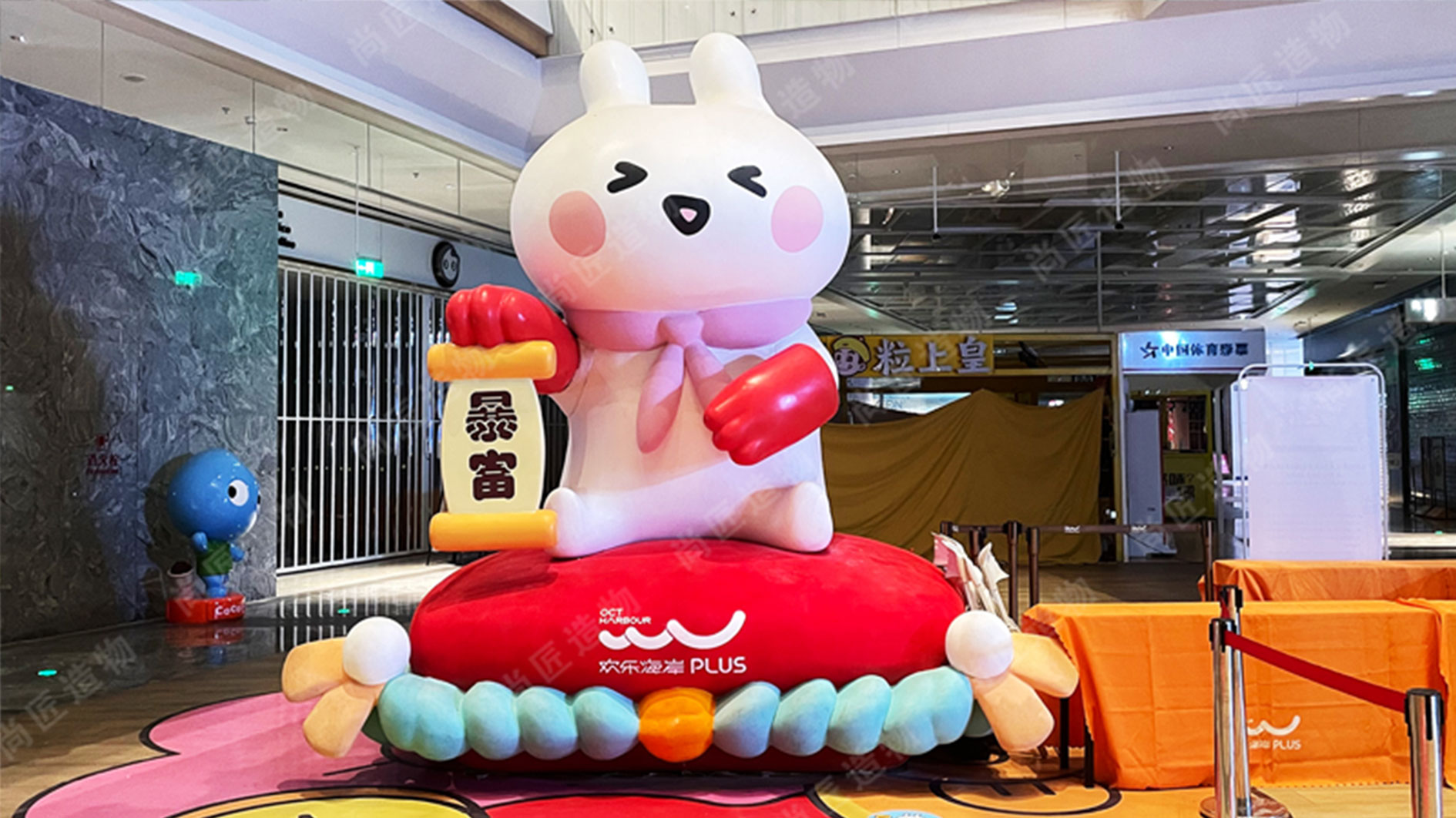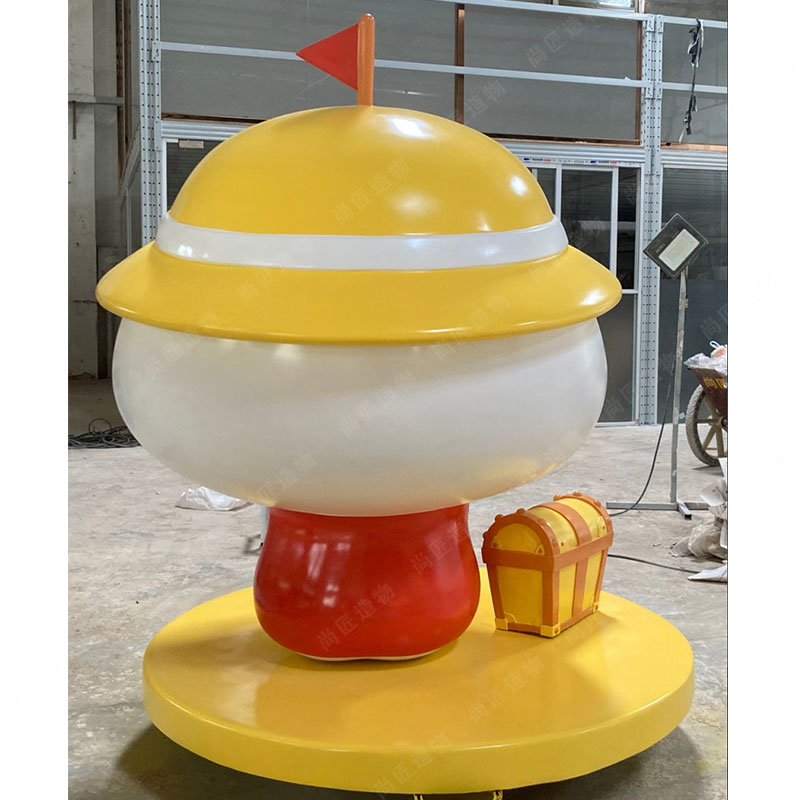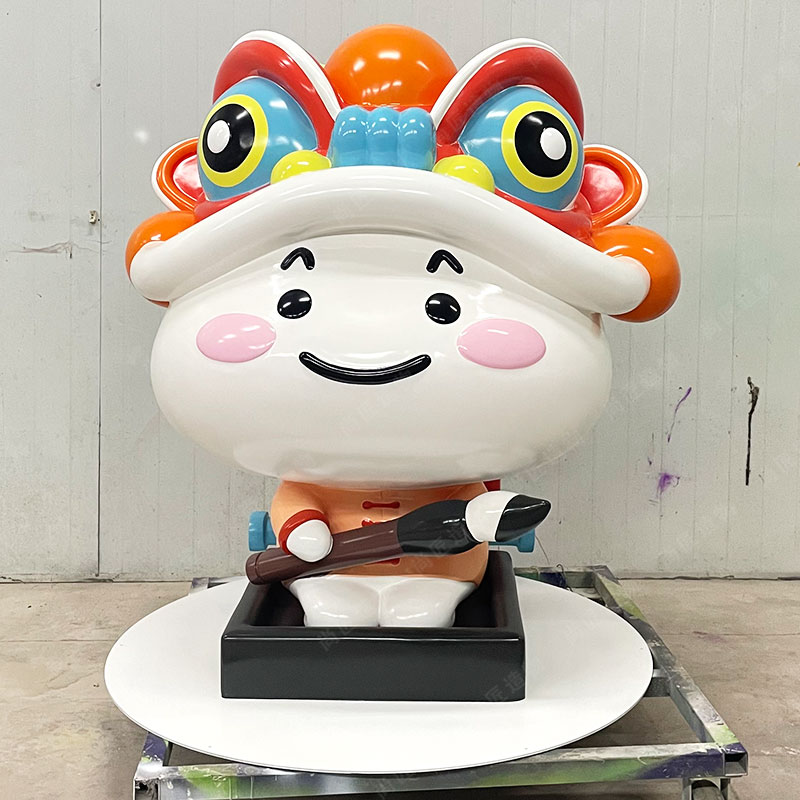Key Takeaways
Combining FRP (Fiber-Reinforced Plastic) and stainless steel in sculpture design unlocks unique possibilities by merging flexibility and strength. FRP’s lightweight, moldable properties allow for intricate shapes, while stainless steel adds structural integrity and weather resistance—ideal for large-scale or outdoor installations. To achieve balance, artists often use FRP for detailed sections and stainless steel for load-bearing frameworks.
“Hybrid sculptures thrive when materials complement rather than compete. Let FRP handle complexity and steel anchor the form.” — Industrial Sculptor Linda Voss.
A practical approach involves prototyping small sections to test adhesion methods, such as epoxy bonding or mechanical fasteners. For dynamic pieces like kinetic sculpture, stainless steel joints paired with FRP panels ensure movement without compromising durability. Surface finishing requires attention to compatibility: powder-coating FRP to match steel’s brushed or polished textures creates visual cohesion.
Tip: When welding stainless steel near FRP, shield the plastic with heat-resistant barriers to prevent warping.
By strategically layering materials, artists can enhance both aesthetic impact and functional longevity, bridging traditional craftsmanship with industrial innovation.

Blending FRP and Stainless Steel Techniques
Combining fiberglass-reinforced polymer (FRP) and stainless steel in sculpture creation leverages the unique strengths of both materials. FRP’s moldable nature allows artists to craft intricate, lightweight forms with precise detailing, while stainless steel provides structural integrity and weather resistance. This hybrid approach is particularly effective for large-scale installations, where FRP components reduce overall weight without compromising the artwork’s visual impact, and steel frameworks ensure longevity in outdoor environments.
| Material Property | FRP Advantages | Stainless Steel Advantages |
|---|---|---|
| Flexibility | High shape customization | Rigid, load-bearing capacity |
| Weight | Lightweight | Heavy-duty stability |
| Durability | UV-resistant finishes | Corrosion resistance |
| Cost Efficiency | Lower mold production costs | Long-term maintenance savings |
To achieve cohesion, artists often layer FRP over stainless steel armatures or embed steel supports within FRP shells. For example, stainless steel sculpture bases can anchor FRP elements, creating dynamic contrasts between glossy metal surfaces and textured composites. Transitioning between materials requires careful planning during the design phase to address thermal expansion differences and joint reinforcement. This synergy not only expands creative possibilities but also addresses practical challenges like installation logistics and environmental adaptability.
Merging Moldable FRP with Metal Durability
The integration of FRP (Fiber-Reinforced Polymer) and stainless steel in sculptural art hinges on balancing contrasting material properties. FRP’s lightweight, moldable nature allows artists to craft intricate geometries—curves, textures, and fine details—that would be challenging or cost-prohibitive with rigid metals alone. Meanwhile, stainless steel provides structural integrity and weather resistance, ensuring longevity for outdoor installations. By layering FRP elements over stainless steel frameworks, sculptors achieve dynamic forms that withstand environmental stressors while retaining artistic precision.
A key advantage lies in FRP’s adaptability during prototyping. Artists can refine shapes rapidly using FRP molds before finalizing designs in stainless steel, minimizing material waste. For instance, realistic sculpture projects often employ this hybrid approach, using FRP for lifelike surface detailing and steel for load-bearing cores. This synergy addresses FRP’s vulnerability to UV degradation by shielding it within metal armatures, while steel’s industrial aesthetic is softened by FRP’s organic finishes. Transitioning between materials requires careful joint design, often involving epoxy adhesives or mechanical fasteners that accommodate thermal expansion differences. Such techniques ensure seamless fusion, marrying impermanence with permanence in contemporary art.

FRP-Stainless Hybrid Sculpture Design Tips
Designing hybrid sculptures that integrate FRP (fiber-reinforced polymer) and stainless steel begins with understanding each material’s strengths. FRP’s moldability allows artists to craft intricate organic forms, while stainless steel provides structural integrity for load-bearing elements. Start by sketching designs that separate components based on functional needs: use FRP for lightweight, curved surfaces and stainless steel for rigid frameworks or anchoring points.
When joining materials, consider thermal expansion differences. Stainless steel expands less under heat than FRP, so mechanical fasteners or flexible adhesives are preferable to welded connections. For outdoor installations, apply anti-corrosion treatments to steel joints and UV-resistant coatings to FRP surfaces. Test small-scale prototypes to refine proportions—for example, a Cartoon sculpture might use FRP for exaggerated facial features paired with steel internal armatures.
Balance aesthetic cohesion by unifying textures. Polished steel can mirror FRP’s glossy finish, while brushed metal contrasts with matte composite layers. Always prioritize weight distribution: position steel supports at stress points to prevent FRP warping. This synergy creates durable, visually dynamic artworks suited for both gallery displays and public spaces.
Enhancing Sculptures Through Material Fusion
Combining FRP (https://en.artmovr.com/) elements can be shaped into flowing curves or fine surface details, which are then anchored to a steel base or armature for support.
The synergy between these materials also addresses practical challenges. FRP’s corrosion resistance complements stainless steel’s durability, making hybrid sculptures suitable for harsh environments. Additionally, the materials’ contrasting finishes—glossy FRP against brushed or polished steel—create dynamic visual contrasts. Artists often exploit this interplay by using FRP for translucent or pigmented sections, juxtaposed with metallic accents. By integrating these mediums, sculptors achieve works that embody both technical innovation and expressive depth, bridging traditional craftsmanship with modern engineering.

Step-by-Step Fabrication Process Guide
The fusion of FRP (fiber-reinforced polymer) and stainless steel in sculpture creation demands a methodical approach. Begin by finalizing the design blueprint, ensuring proportions account for FRP’s lightweight properties and stainless steel’s structural rigidity. For FRP components, start with a clay or foam prototype to shape the mold. Apply layers of fiberglass matting soaked in resin, curing each layer under controlled humidity to prevent air bubbles.
Next, fabricate the stainless steel framework using TIG welding for precision joints, ensuring seamless integration points for attaching FRP elements. Sandblast the metal surface to enhance adhesion before bonding materials with epoxy adhesives rated for mixed-media use. For dynamic pieces like IP character sculpture, reinforce load-bearing areas with steel dowels embedded within FRP sections during curing.
After assembly, refine edges with rotary tools to harmonize textures, blending FRP’s smooth finish with steel’s brushed grain. Conduct stress tests by suspending the sculpture to identify weak points, addressing them with additional resin coatings or weld reinforcements. This systematic workflow balances artistic vision with engineering rigor, ensuring hybrid sculptures withstand environmental factors while maintaining aesthetic coherence.
Durability Meets Flexibility in Modern Art
The fusion of stainless steel’s structural resilience with FRP’s adaptable nature creates artworks that redefine modern sculptural possibilities. Stainless steel, known for its resistance to corrosion and ability to withstand environmental stressors, provides a robust framework for large-scale installations. Meanwhile, FRP (fiber-reinforced polymer) introduces unparalleled flexibility, allowing artists to craft intricate curves, organic shapes, and delicate textures that metal alone cannot achieve. This combination addresses a critical challenge in contemporary art: balancing aesthetic intricacy with practical longevity.
For instance, sculptors often use stainless steel as a load-bearing core, while layering FRP to add lightweight, detailed surfaces. The result is art that maintains structural integrity in outdoor settings while showcasing refined artistic expression. Additionally, FRP’s moldable properties enable seamless integration with metal joints, ensuring cohesive designs without compromising durability. Artists working with this hybrid approach report enhanced creative freedom, as FRP compensates for stainless steel’s rigidity, enabling dynamic forms that adapt to both indoor galleries and public spaces.
This synergy of materials reflects broader trends in art and design, where functional resilience and imaginative form converge to meet evolving aesthetic and technical demands.

Finishing Methods for Mixed-Media Sculptures
Achieving a cohesive finish in FRP-stainless steel sculptures requires balancing material-specific treatments with unified aesthetic goals. For FRP components, surface preparation begins with sanding to remove mold lines, followed by priming to ensure adhesion of paints or metallic coatings. Stainless steel elements typically undergo brushing, polishing, or bead blasting to enhance reflectivity or create matte contrasts. Chemical passivation is often applied to stainless steel to prevent oxidation while preserving its industrial luster.
When merging these materials, artists may employ patinas or clear sealants to harmonize textures. For instance, translucent epoxy resins can bridge FRP’s smooth surfaces with stainless steel’s grain patterns, creating visual continuity. Environmental considerations—such as UV-resistant topcoats for outdoor installations—extend durability without compromising artistic intent. Transitional edges where materials meet demand meticulous attention; silicone-based fillers or micro-welding techniques ensure structural integrity while minimizing visible seams. This phase transforms technical precision into artistic coherence, setting the stage for collaborative innovations discussed in subsequent sections.
Collaborative Approaches for Artistic Innovation
Combining FRP (fiber-reinforced polymer) and stainless steel in sculpture requires intentional collaboration between material science and artistic vision. In practice, this often involves interdisciplinary teams—sculptors, engineers, and industrial designers—working together to address challenges like thermal expansion differences or load distribution. For instance, FRP’s flexibility allows for intricate, organic shapes that can serve as lightweight frameworks, while stainless steel components add structural integrity and visual contrast.
A key strategy is prototyping hybrid designs through iterative testing. Artists might sculpt small-scale FRP models to refine curves and textures, then consult metalworkers to integrate stainless steel supports or surface details. This process balances creative experimentation with technical precision, ensuring the final piece withstands environmental stressors without compromising aesthetics. Workshops that pair traditional metalworking tools with modern FRP layering techniques further enable innovative outcomes, such as textured steel panels embedded within translucent resin layers.
By fostering dialogue across disciplines, creators unlock new possibilities—transforming functional junctions into artistic focal points or using stainless steel’s reflective qualities to amplify FRP’s color saturation. Such collaborations not only solve material limitations but also redefine how audiences perceive strength and delicacy in contemporary art.

Conclusion
The integration of FRP and stainless steel in sculptural practice represents a strategic evolution in contemporary art, balancing material innovation with functional resilience. By leveraging FRP’s adaptability for intricate detailing and stainless steel’s structural permanence, artists achieve works that withstand environmental demands while retaining aesthetic nuance. This synergy not only expands creative possibilities but also addresses practical challenges in large-scale installations, where weight reduction and corrosion resistance are critical.
Collaboration between sculptors and metalworkers remains central to refining hybrid techniques, ensuring seamless transitions between materials during fabrication. As artists continue experimenting with layered finishes—such as polished steel accents against textured FRP surfaces—the dialogue between industrial durability and organic forms grows richer. Moving forward, this fusion is poised to redefine public art, offering dynamic solutions for spaces requiring both visual impact and long-term resilience. The marriage of these materials signals a shift toward interdisciplinary craftsmanship, where technical precision and artistic vision converge to shape tomorrow’s sculptural landscapes.

Frequently Asked Questions
What makes FRP and stainless steel compatible in sculpture design?
FRP’s flexibility allows intricate shaping, while stainless steel adds structural integrity. Their combined use balances lightweight detailing with long-lasting resilience, ideal for indoor and outdoor installations.
How do artists prevent corrosion between these materials?
A protective barrier, such as epoxy primers or galvanic isolation, is applied to minimize electrochemical reactions. Proper sealing ensures moisture doesn’t compromise the bond over time.
Can FRP-stainless hybrids withstand harsh weather conditions?
Yes. Stainless steel’s corrosion resistance complements FRP’s UV-stable resins, making the hybrid suitable for environments with extreme temperatures, humidity, or salt exposure.
What tools are essential for joining FRP and metal surfaces?
Adhesive bonding with industrial-grade epoxies or mechanical fasteners like stainless steel rivets are common. Precision grinders and polishers refine edges for seamless integration.
Are there weight limitations for large-scale hybrid sculptures?
FRP reduces overall mass, but load-bearing sections often use stainless steel frameworks. Engineers calculate stress points to ensure stability without sacrificing artistic form.
How do finishes differ between the two materials?
Stainless steel may undergo brushing or mirror polishing, while FRP accepts pigmented gels or textured coatings. Clear topcoats unify the appearance while preserving material contrasts.
By addressing these practical concerns, artists can confidently explore hybrid techniques that push the boundaries of contemporary sculptural expression.
 ch
ch English
English






